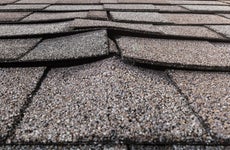Should you return a partial payout from a home insurance claim?

The Bankrate promise
At Bankrate, we strive to help you make smarter financial decisions. To help readers understand how insurance affects their finances, we have licensed insurance professionals on staff who have spent a combined 47 years in the auto, home and life insurance industries. While we adhere to strict , this post may contain references to products from our partners. Here's an explanation of . Our content is backed by Coverage.com, LLC, a licensed entity (NPN: 19966249). For more information, please see our .
Once your home insurance claim is approved, the payout and repair processes begin. Your insurance provider may decide to pay you directly or the contractor responsible for your repairs. If your insurer pays you directly, you may receive a partial payout and have to submit more documentation to receive the rest. Other times, you could receive more than what the repair costs are. Knowing how a home insurance payout can affect premiums and what happens if you don’t use the full payment can help you decide what to do if you are ever in this situation.
Key takeaways
- Your home insurance claim payout may be either a full or a partial payout, depending on the nature of the damage and your carrier's policies.
- Filing a property insurance claim may increase your annual premium, but returning an unused partial claims payout won't help return your homeowners insurance premium to its original rate.
- If you receive an overpayment from your insurance company, it’s likely best to contact them to determine the best course of action.
- Using a claims payout for things other than the approved repairs may be seen as insurance fraud by your carrier.
What is a partial insurance payout?
If your insurer decides to pay you directly, you could either receive the entire payout, or you may receive a partial payout. In a partial insurance payout, you’ll receive a portion of the total claims payout amount up front. Once you submit more documentation about your home repair process, you will then receive the rest. Alternatively, if you receive the entire payout upfront, you may end up with extra funds if the repairs end up costing less than estimated. In rare cases, you may even have extra money left over after just a partial claims payout. The cost of repairs may vary greatly based on current economic conditions, like the cost of labor and materials, so estimates may not always line up with the actual cost of repairs.
Does returning a payout decrease your home insurance premium?
Filing a property insurance claim may increase your annual premium once it’s time to renew your policy. However, returning a claims payout or a partial payout won’t help return your homeowners insurance premium to its original rate. Your premium is based on both the frequency of claims and the amount to which they are paid. Even if you return some of the money, the claim is still part of your insurance history. Claims that result in larger payouts may cause your home insurance premium to increase more than a smaller claim, but even if you return some money to lower your claim payout, it’s not likely that you’ll return enough to offset a premium increase.
Additionally, receiving overpayment for a claim is rare. You generally receive payment in stages, with the final check issued after the insurance company receives a certificate of completion to confirm both the final cost and the actual repairs. You may need to provide invoices and photographs to show that the work is completed. In some cases, your contractor may request a “direction to pay,” which asks that they be paid by the insurance company rather than the homeowner. In this situation, you may need to confirm the work was done properly before your home insurance company pays the contractor the final installment.
How does a home insurance payout work?
There are several steps that take place during the home insurance claim payout and repair process.
- First, a field adjuster will come to your home, take photos of the damage and provide a comprehensive report to your insurer.
- Then, your insurance company will determine whether the loss is covered, and if it is, provide an estimate of the repair costs needed based on your policy’s coverage limits. At that point, you might receive an initial payment from the insurance company to start repair work on your home.
- Once the work is completed, you’ll submit the Certificate of Completion (COC), which verifies the funds were used to complete the required repairs. Once the repairs are completed, your insurer will initiate the release of the remaining balance.
- If you submit a claim for personal property, you’ll have to account for whether you have an actual cash value (ACV) policy or replacement cost coverage. Your initial claim check for personal property damage will be for ACV. For replacement cost coverage, once you’ve purchased new items to replace the damaged or destroyed items damaged in a covered peril, you can submit proof of purchase and receive a second payment for the remaining amount, covering your items at replacement cost value.
Also, remember that your deductible is subtracted from the claim amount you receive from your insurance company. Typically, you pay the deductible to the contractor completing the work, while the insurance company pays the rest. While a higher deductible typically saves you money on your annual premium, it does mean you’ll pay more out of pocket following a claim.
If you fail to complete the repairs outlined by your insurance company, you may be denied future claims or your coverage may be canceled. That’s because insurance companies have a legal obligation to provide compensation to restore the building to its condition before the loss and unrepaired damage increases risk of further expense and potentially liability concerns.
Are there deadlines to use your payout?
Insurance payout deadlines depend on your home insurance policy. This is most relevant for policies that include replacement costs. You’ll initially be paid out based on the actual cash value. You won’t receive the final payment encompassing full replacement cost until you submit your Certificate of Completion showing that you updated those items accordingly. You may have several months to do this, but you’ll need to check with your insurer to ensure you follow their requirements.
What happens if you don’t use the full homeowners settlement check?
There may be some circumstances in which you have leftover money in a claim payout, although this is rare. The adjuster’s estimate takes into account current market rates for labor and materials. However, those actual numbers can change, and you may experience marginal savings in the repair process. In this situation, you likely want to check with your insurance carrier about what to do.
If you have a mortgage on your home, your claims checks may be payable to both you and your mortgage lender. This can make excess funds a little trickier to handle, as you’ll need your mortgage lender’s permission to cash the check and send back any overage. If your claim payouts are paid by direct deposits, you may be able to write a check to your insurance company or wire excess payments back directly. Still, you should talk to your insurance company about excess funds to understand the correct course of action.
Frequently asked questions
-
-
If you use insurance money for other things than paying for repairs caused by a covered claim, it could be considered insurance fraud. If you have excess funds after claim repairs have been completed or received an overpayment from your insurance company, it’s best to contact them to determine the best course of action. Failing to act and using the insurance money for other things could cause your policy to be canceled and the insurer could report the incident.
-
Although leftover funds from a claims payout is rare, it’s not unheard of. In this situation, it’s recommended to let your insurance provider know and ask for direction on what to do with the extra funds.
-
To take advantage of your homeowners insurance claim, you’ll want to read your policy again and review your coverage, policy limits, and endorsements and exclusions. Document everything related to the claim, which you can use to dispute a claim or settlement, if needed. Having a detailed home inventory can also help ensure you get what you deserve out of your home insurance claim.
-
You can deposit a check made out to you and your mortgage company, but the lender will have to endorse it first. If you get a check with both yours and the lender’s name, you should contact your mortgage company’s loss department. They will provide instructions on how to get the check endorsed, which could include requiring a copy of the filed claim, estimate and invoice from the contractor. The lender may keep the funds in escrow rather than allowing you to deposit the check into your own account. The process can vary, so the first step should be contacting the lender to learn more.
-
Related Articles



